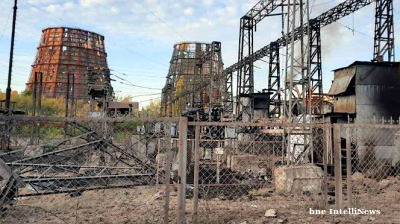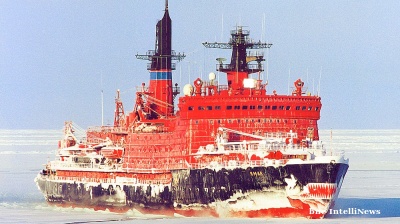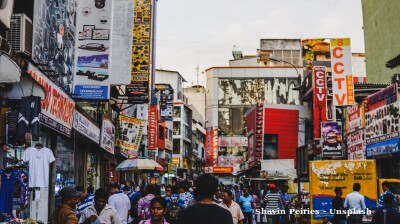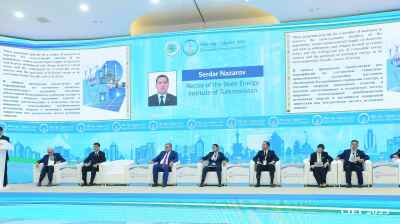Ancient rivalries and a tortured relationship with Russia have made Turkmenistan the black sheep in the Central Asian family. But that is starting to change as the world gets smaller and economic interests are slowly pulling the gas-rich country out of its isolationism.
Turkmenistan has had a rough ride since independence was thrust upon it in 1991, and its foreign policy has been marked by a go-it-alone approach since the beginning of its modern history.
In 1997 Ashgabat faced an existential crisis when Russia’s Prime Minister Viktor Chernomyrdin abruptly ordered state-owned Gazprom to shut down Turkmenistan’s gas exports via the Soviet-era pipelines in an effort to buy up its energy assets.
“With people starving and the national budget in free fall, Turkmenistan’s [first] president, Saparmurat Niyazov, cut back on just about everything, including education, health and welfare payments. In the end Turkmenistan prevailed, but it did so as a soloist, not as a member of a regional team,” said S. Frederick Starr, who is Chairman of the Central Asia-Caucasus Institute at the American Foreign Policy Council in Washington, DC, in a substack post.
Almost all of Turkmenistan’s income comes from the export of gas from its massive deposits, yet it remains bottled up in Central Asia, as while there are gas pipelines running north through Russia, a trans-Caspian or another south to Pakistan have yet to be built.
To break its dependence on Russia, Niyazov (also known as Turmenbashi, or “Father of the Turkmens”) proposed and built a new pipeline to supply gas to China – the longest gas pipeline in the world – bypassing its neighbours. A successful project that brought in fresh revenue, nevertheless the pipeline reinforced Ashgabat’s isolation.
Turkmen officials defend this insularity by pointing to the country’s historical and structural challenges, says Starr. “We inherited fewer resources and infrastructure than any other Central Asian state,” they argue, adding that regional ties were historically fraught due to long-standing conflicts with the Uzbek Khanates and minimal connections to Azerbaijan. Consequently, post-Soviet Turkmenistan found it more advantageous to look westward to Turkey than to engage with its immediate neighbours.
However, a thaw was already underway under Turkmenbashi and Islam Karimov, who met to put aside four centuries of enmity. For centuries the only way Turkmenistan could export its famed carpets was through markets in the Uzbek-ruled Bukhara, causing them to be known as “Bukharan” rather than “Turkmen” carpets. The two leaders resolved this dispute with astonishing speed, according to Starr, laying the basis for better commercial ties.
With the death of Karimov in 2016 and the ousting of Kazakhstan’s Nursultan Nazarbayev in 2020 in a coup that cemented the power of current president President Kassym-Jomart Tokayev, the relations between the five ‘Stans have begun to develop rapidly. The war in Ukraine and sanctions on Russia have only energised the improving relations; pressure from the great powers of Russia, China and the US has pushed the ‘Stans to club together to improve their collective bargaining power. All of them have adopted some sort of multivector strategy, where they studiously sit on the fence between the geopolitical East-West poles, but work more closely together as a region. There is even talk of setting up a “Silk Road Schengen” visa regime and a common Central Asian market.
Early steps towards regional engagement
Under President Sardar Berdymukhamedov and his predecessor and father, Gurbanguly Berdymukhamedov, Turkmenistan has begun to open up and play a much more active role in regional relations.
Though often overlooked, Turkmenistan has contributed to key regional initiatives, such as the establishment of Central Asia as a nuclear-free zone in the 1990s, and has hosted the UN’s Regional Anti-Terrorism Centre since 2018. The five presidents have also taken to travelling together as a group in the so-called C5 Format and Berdymukhamedov has accompanied the others on trips to Xi’an, St Petersburg, Berlin and Washington.
Similarly, the Turkmenistan-China gas pipeline project necessitated collaboration with Uzbekistan and Kazakhstan, fostering unprecedented positive contact among the three countries as they begin to cooperate on energy infrastructure for the first time.
Under Berdymukhamedov, intra-regional engagement is gaining momentum as Turkmen leaders are increasingly visible in regional forums, supported by international recognition of Central Asia as a cohesive region. Beyond diplomacy, practical connections are emerging through expanded business travel and everyday communication across borders as the region flourishes. As bne IntelliNews reported, Central Asia is the biggest winner from the war and is enjoying a manufacturing and FDI boom as a result of the tectonic remake of trade and production in the Eurasian region as a result of the sanctions on Russia.
Shared interests in gas and connectivity
With their economies growing at 6% a year or more, energy security is becoming increasingly important for the ‘Stans. While Turkmenistan and Kazakhstan have copious amounts of oil and gas reserves and the other three do not, as part of the green transition and the need for more electricity, all the ‘Stans have begun to cooperate more closely on building up the regional energy infrastructure, such as reviving the Central Asian power grid.
Decades of tension between Turkmenistan and Uzbekistan have eased, enabling cooperation on energy projects. Kazakhstan, Uzbekistan and Turkmenistan have found common cause in exploring export routes that bypass Russia, potentially including a trans-Caspian pipeline to Europe.
The icing on the cake will be opening up a southern corridor via Afghanistan to access the vast markets of Southeast Asia, and the keystone project here is the TAPI pipeline, which when completed would link the Turkmen gas fields to Afghanistan, Pakistan and India. This idea has been on the drawing board for decades, but recent efforts to engage the Taliban and secure Gulf financing are the latest efforts to finally get the project going.
Afghanistan is the key to uncorking Central Asian. When he took over and in his first speech to the UN, Uzbek President Shavkat Mirziyoyev highlighted the need to stabilise Afghanistan, long before the war in Ukraine or the rise of geopolitical tensions, which remains one of his major foreign policy goals. All the Central Asian countries are also deepening ties with Afghanistan, boosting trade and providing Kabul with power, despite the fact the Taliban usually don’t pay for it.
The cultural dimension
While these developments are encouraging, scepticism persists. Critics argue that Turkmenistan’s tribal history and long-standing rivalries with neighbours remain barriers to genuine regional integration. Turkmen scholars, however, present a different narrative, reframing past conflicts as struggles for survival rather than isolationist tendencies, says Starr.
“But the question remains: is today’s Turkmenistan truly a part of the world that once produced the great flowering of Central Asian civilisation and some of the world's greatest scientists, poets, mathematicians and theologians?” asks Starr. “This question could be the subject of learned monographs and scholarly conferences. But there is a much simpler answer, namely, that the Government of Turkmenistan believes deeply that this is indeed the case.”
Features

Ambition, access and acceleration – Uzbekistan’s Startup Garage opens free academy for entrepreneurship
Aim is to train 50,000 young founders by 2030.

Ukraine’s growing energy crisis promises a cold and dark winter
Since the summer, Kyiv has changed tactics. Given the almost complete failure of Western oil sanctions to curb Russian oil exports, it has been targeting Russian oil refineries. The Kremlin has struck back, targeting Ukraine's power system.

Russia, China sign off on Northern Route shipping deal to slash global freight times
Russia and China have signed a landmark agreement to develop and commercialise the Northern Sea Route (NSR), after Beijing tested the route last month, that could slash Europe-Asia cargo transit times and challenge the primacy of the Suez Canal.

Sri Lanka’s economic escape
Sri Lanka’s recovery over the past year reads like a narrow escape rendered into a cautious, albeit unfinished success story.


_seen_here_meeting_with_Congressman_Jimmy_Panetta_201025_Cropped_1760946356.jpg)

